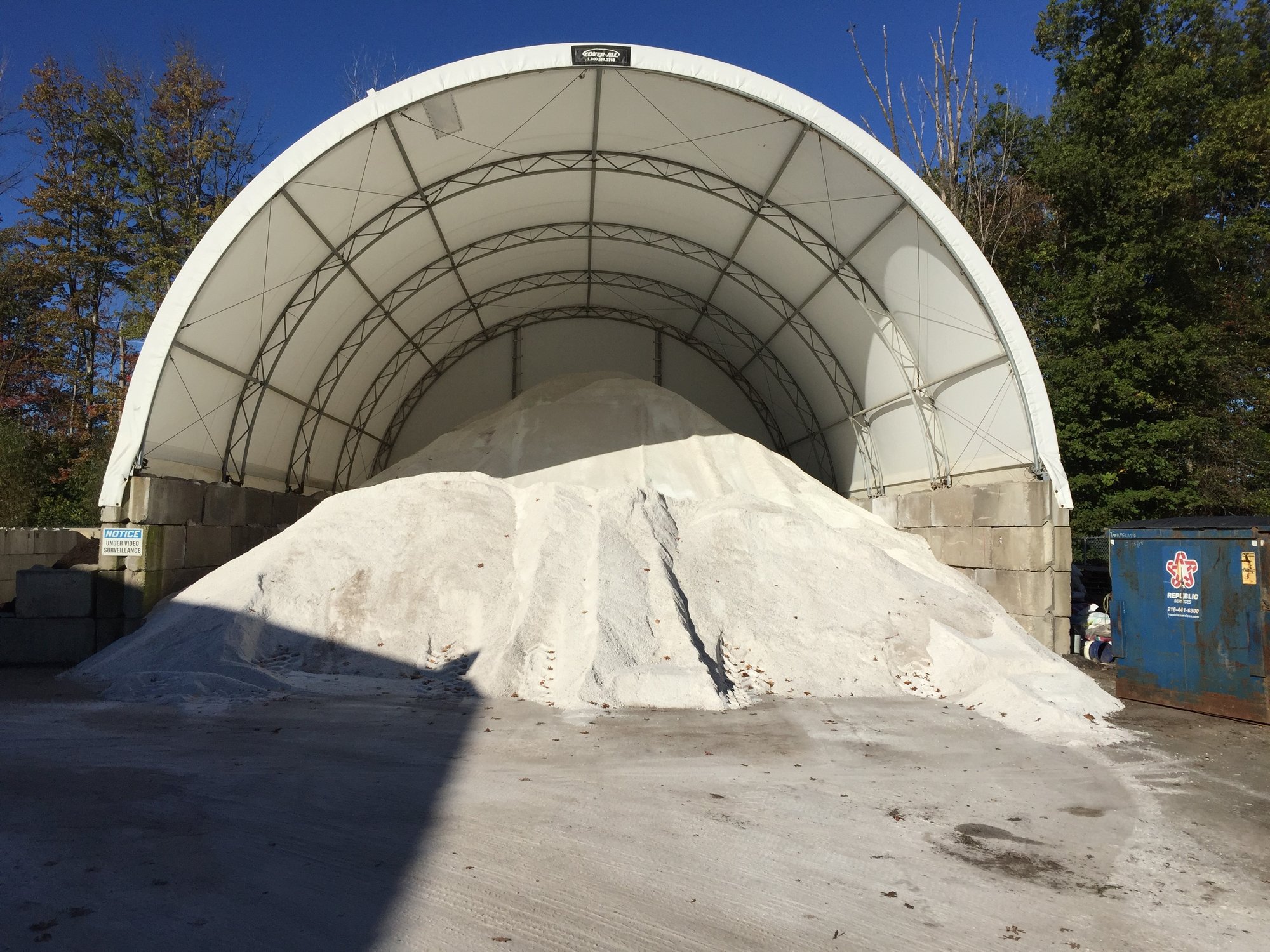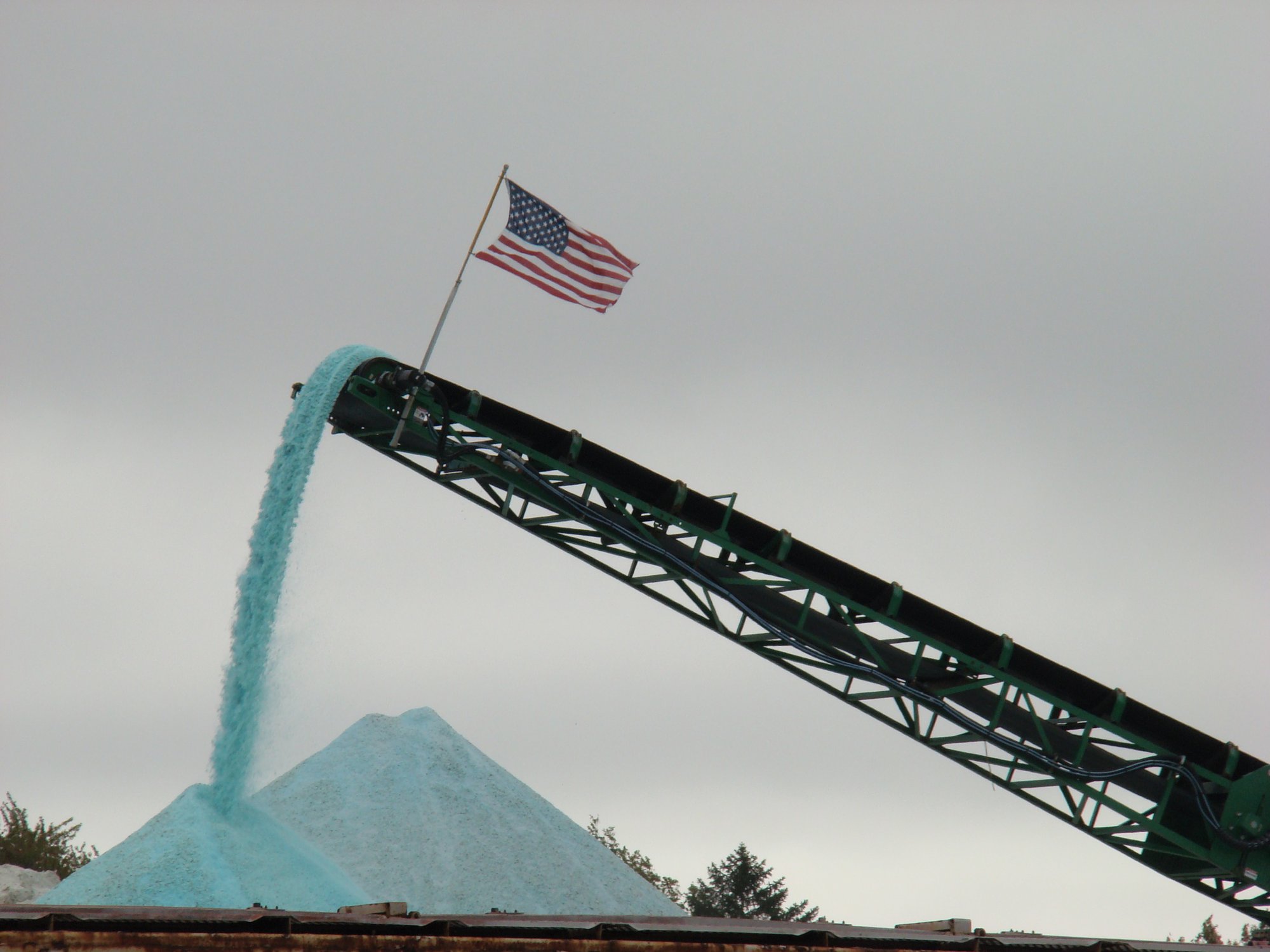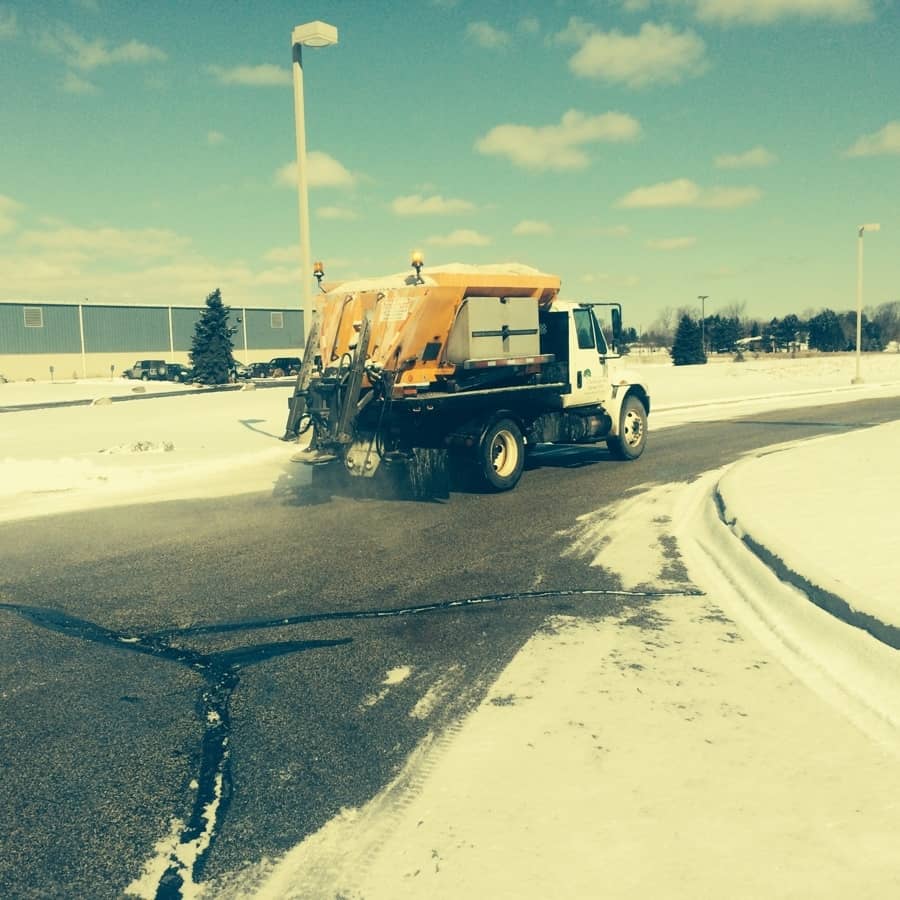The snow piles up and then melts, and then piles up and then melts again. And then the temperatures drop.
You know what’s coming: ice. As your sidewalks, pathways, entryways, and parking lots quickly glaze over, they become instantly slick. And for a Northeast Ohio commercial property, slick means slips and falls, possible accidents, and maybe even property damage. Not cool.
Enter salt, an ice melting savior. Salt, as well as ice melt, are products that can keep that ice from building by lowering the freezing point of water. But which one is better, ice melt or salt? Here are the differences between rock salt and ice melt so you can understand which one makes more sense for your commercial property.
Rock Salt vs. Ice Melt
What is rock salt? Rock salt, or sodium chloride, is actually pretty self-explanatory. Yes, it’s the same salt you use at the dinner table, but for snow-melting purposes it comes in larger chunks.
What is ice melt? Ice melt, on the other hand, is sodium chloride mixed with calcium chloride or magnesium, and will look a little different than rock salt; it’ll come in more of a pellet form that resembles sand grains or flakes.
While both products have the ultimate goal of de-icing, they each have their pros and cons.
Rock Salt: Pros & Cons
Rock salt is the go-to product for melting ice during Northeast Ohio winters.
Rock salt is gritty so it creates an instant grippable surface as it does its job. What it does is penetrate ice to form a water and salt combination, also known as brine. Brine’s freezing point is lower than water alone, so as long as adequate salt is present, water on your commercial pathway shouldn’t freeze over. 
Rock salt is also easily available except when extreme and extended winter weather has caused shortages. And the reason people go for it is because it’s the most inexpensive ice-melting option.
However, while using rock salt as ice removal for commercial properties, you should also consider its cons.
Rock salt can be harmful to some plant life, so using it too close to prime landscape beds may not be a good idea. But it’s use on large, open areas like parking lots is unchallenged.
Ice Melt: Pros & Cons
Ice melt products are made from a combination of various chlorides, including magnesium, potassium, calcium, and sodium.
Ice melt is less harmful to pets and plants, so it can be used closer to areas where you don’t want to risk plant burning or damage from salt. 
Ice melt is also known for de-icing very quickly (faster than rock salt, especially when it’s very cold), making it great for high-traffic areas on your commercial site, such as walkways, pathways, and entranceways.
If a storm hits in a speedy fashion, ice melt can also work fast to reduce the slick stuff. While rock salt can work to a 5 degree Fahrenheit temperature, ice melt can work to negative 15 degrees. So, during those very cold storms that come without warning, ice melt could be a quicker way to get your property back to its accessible and safely functioning state.
In the con column, ice melt does have one drawback: It’s more expensive than rock salt.
What’s Your Ideal Ice Management Solution? Ice Melt or Rock Salt?
While rock salt and ice melt both have their pros and cons, each one can be incredibly effective in ice removal for your commercial property.
In fact, there isn’t a definitive answer on which one is best to use overall. However, the approach you prefer could be a combination of the two based on weather patterns, as well as your property’s specific needs.
A truly effective ice management strategy will require you to consider some aspects of your facility. Do you manage a facility that requires total removal of ice and snow in some areas at all hours? A hospital or health care facility may fall into this category. In this case, a combination of ice melt on walkways and entryways and rock salt on parking lots and open areas of parking structures could be your best bet to ensure safety and reduce liability, while remaining within a budget. 
If you operate an industrial facility with large, open parking areas and few plant beds that could be at risk from too much salt, rock salt may be the only thing you need in your ice-fighting arsenal.
Trust Your Slick Surfaces to Turfscape
Ice build-up can be scary on commercial properties. Not only don’t you want complaints from employees or visitors who are slipping and having a hard time accessing your site, but you also don’t want to increase the risk of falls and accidents at your property.
And Mother Nature, in the meantime, is relentless in her ability to just drop a winter storm at the worst possible moment, like when you have a big sale happening at your retail facility or during rush hour at your office park. She’s so inconsiderate.
You just want the ice melted and not to have to worry about it. We completely understand.
When it comes to grasping the differences between rock salt and ice melt, we can help you figure out what’s best for your property based on your specific needs and goals. Rock salt may be all you need, but ice melt could have some advantages on specific areas if you require a faster or more plant-safe solution.
Instead of trying to figure out the balance of which products to use and how they impact your costs on your own, let us help you by providing a plan to fit your budget and meet all of your needs, making you look pretty smart in the process.
Turfscape would be happy to discuss some specific ideas that could improve safety and security at your commercial facility and fit within your budget so you are the property champion. Request a proposal today. We’ll review your options together so you can make the best choice. 


